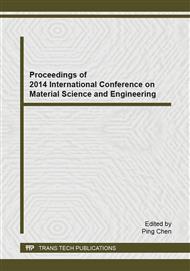p.155
p.161
p.166
p.173
p.180
p.186
p.190
p.194
p.198
Prediction of Hybrid Fiber Reinforced Concrete Strength on Base of RBF & BP
Abstract:
The complex nonlinear problem exists between the factors which influence the strength of hybrid fiber reinforced concrete. The nonlinear relationship between input variables as the factors and output variables as the strength can be obtained artificial neural network which have the feature of self-adapting, self-studying and nonlinear mapping. RBF and BP neural network models are established in MATLAB in this paper based on experimental values. Compressive strength and flexural strength of hybrid fiber reinforced concrete are predicted respectively and comparing with the measured values, predicted values are analyzed. The results show that the predicted values based on RBF tally with the experimental values, and the strength prediction ability of RBF is higher than BP neural network. The needs of engineering can be meet by this method with accurate prediction ability, a new method for the study of hybrid fiber reinforced concrete strength is provided.
Info:
Periodical:
Pages:
180-185
Citation:
Online since:
October 2014
Authors:
Price:
Сopyright:
© 2014 Trans Tech Publications Ltd. All Rights Reserved
Share:
Citation:


